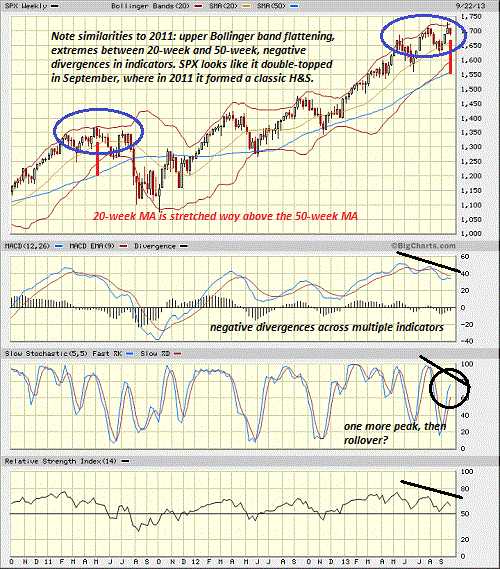Courtesy of Charles Hugh-Smith of Of Two Minds
We can anticipate another rally once the political charade plays out, but what happens after that?
We can safely predict the inevitable budget-debt ceiling deal will spark yet another "the Status Quo is saved" rally in the stock market. But what happens after that?
Here is a three-year chart of the S&P 500 (SPX). The potential for another spike higher is reflected in the rising stochastics.
But overall, the chart is showing weakness and the potential for a serious decline. The negatives include:
1. A number of indicators (MACD and relative strength) are negatively divergent, i.e. they are declining as price moves higher
2. The 20-week moving average (MA) is stretched above the 50-week MA (i.e. the market has reached a point where the 20-week tends to converge with the 50-week MA)
3. The upper Bollinger band is flattening, showing loss of momentum.

Some similarities with 2011 are discernable. In 2011, a multi-month topping process traced out a classic head-and-shoulders pattern. This year, the chart has a similar structure of divergence, with a potential double top in play or even a spike higher to a nominal new high in the the 1750-1775 area–a target that some technical analysts have forecast for quite some time.
Regardless of whether the market double-tops or hits new nominal highs, the set-up for an extended decline is already in place technically. All this can change, of course; negative divergences can reverse, and a new uptrend can push indicators into bullish territory. But until that happens, the bearish indicators bear watching.



